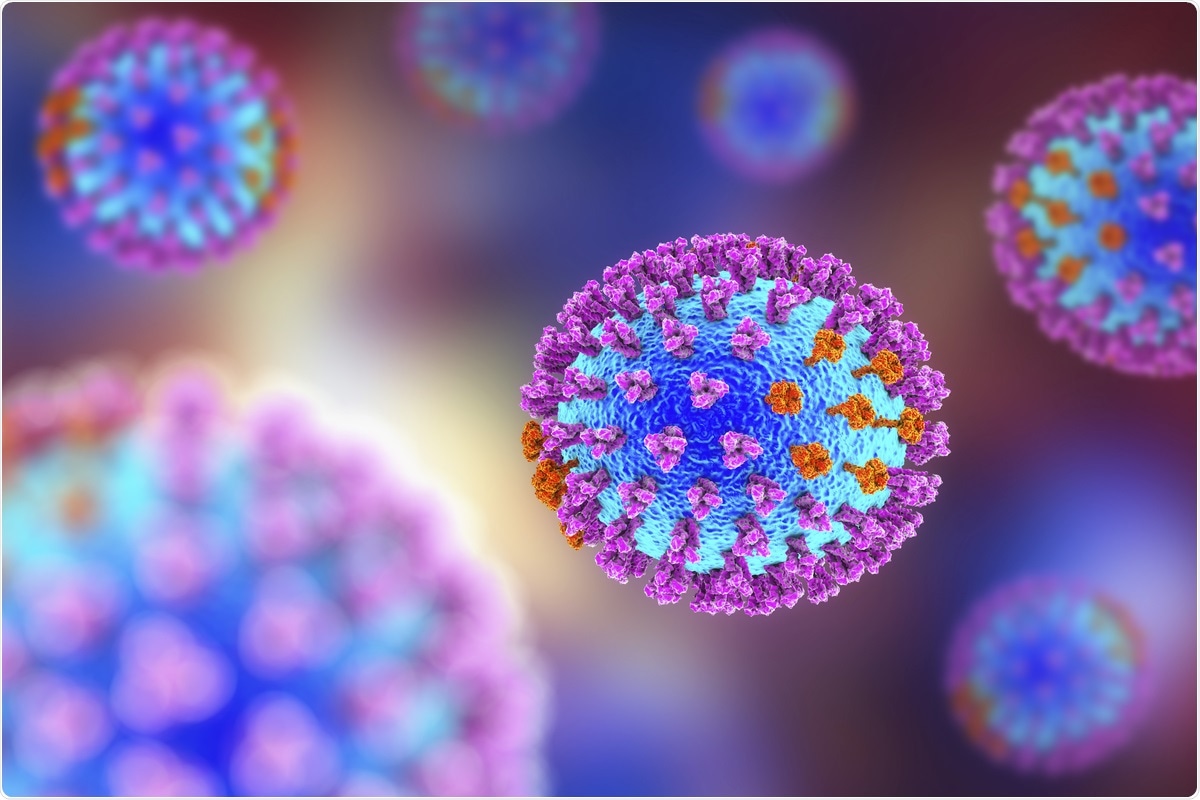It is not yet fully understood whether coinfection with another pathogen may impact the severity of coronavirus disease 2019 (COVID-19). It has been reported in previous studies that coinfections between severe acute respiratory syndrome coronavirus 2 (SARS-CoV-2) and other common respiratory viruses have occurred. A recent meta-analysis of 30 studies, including 3834 patients with COVID-19, revealed that 7% had a bacterial coinfection and 3% had viral coinfections, with influenza A virus (IAV) and respiratory syncytial virus being the most common.
 Study: Increased lethality in influenza and SARS-CoV-2 coinfection is prevented by influenza immunity but not SARS-CoV-2 immunity. Image Credit: Kateryna Kon/ Shutterstock
Study: Increased lethality in influenza and SARS-CoV-2 coinfection is prevented by influenza immunity but not SARS-CoV-2 immunity. Image Credit: Kateryna Kon/ Shutterstock
In a study published in the journal Nature, researchers from the Israel Institute of Biological Research delineated the interplay between IAV and SARS CoV-2 infections. To establish a SARS-CoV-2 susceptible mouse model, the authors employed transgenic mice expressing human angiotensin-converting enzyme 2 (hACE2) under control of human cytokeratin 18 promoter (K18-hACE2 mice).
The study
Firstly, the authors tested the outcome of the SARS-CoV-2 infection two days post influenza infection (dpli) during presymptomatic influenza. At these early stages, the viral titer of IAV in the lings was high, but the mice did not present with any disease manifestations. At five dpli, the IAV-infected mice began to lose weight, and at 9 to ten dpli, they exhibited maximal morbidity.
The mice that were only infected with either influenza or SARS-CoV-2 displayed a mortality rate of 38%, while all the coinfected mice died five to seven days post SARS-CoV-2 infection (dpsi). At six to seven dpli, the IAV-infected and coinfected mice began to lose weight. However, the maximal weight loss of the IAV-infected mice was reached at 8dpli, while the coinfected mice continued to lose weight until ten dpli.
Finally, the authors assessed the effects of coinfection when the administration of SARS-CoV-2 occurred in the late symptomatic stage of influenza disease when maximal morbidity was detected. The body weight and survival rate of the mice were not affected by SARS-CoV-2 infection at eight dpli.
The authors achieved SARS-CoV-2 immunity in the mice by intramuscular immunization of SARS-CoV-2. Immunization via this route induced both cellular and humoral responses against SARS-CoV-2 and was sufficient to protect the mice from a SARS-CoV-2 challenge. However, while mortality caused by SARS-CoV-2 infection was completely prevented by pre-existing SARS-CoV-2 immunity, no effect was observed regarding morbidity and mortality caused by the coinfection of SARS-CoV-2 and IAV.
The authors also examined an alternative route of immunization to rule out the possibility that inadequate protection against coinfection was due to intramuscular immunization. The intranasal route of immunization was employed by the authors, which also did not protect against coinfection.
Mice were administered intramuscular immunization of IAV, 30 days before infection with SARS-CoV-2 and/or IAV, to determine whether pre-existing immunity to IAV can protect against coinfection. The IAV pre-exposure induced cellular and humoral responses against IAV and appeared to reduce the observed morbidity upon infection with IAV.
The SARS-CoV-2 survival rate was not affected by the pre-exposure to IAV. Interestingly, the mortality and severe clinical manifestations associated with IAV and SARS-CoV-2 coinfection were prevented by immunity to IAV. There was no increase in mortality and no weight loss detected in the coinfected mice immunized against IAV compared to the coinfected mice without pre-existing immunity. These results suggest that the severe manifestations associated with coinfection are not due to a more severe SARS-CoV-2 disease but one of IAV.
Implications
This study shows that coinfection of IAV and SARS-CoV-2 causes severe and lethal disease in mice. The severe manifestations presented by coinfected mice were associated with robust induction of innate immunity, raised IAV viral load, and intensified pathology of the respiratory system.
Prior humoral immunity to influenza, but not SARS-CoV-2, stopped progression to severe disease and mortality, suggesting that influenza immunity gained via vaccination may be a valuable tool for reducing the risk of severe coinfection of influenza and SARS-CoV-2.